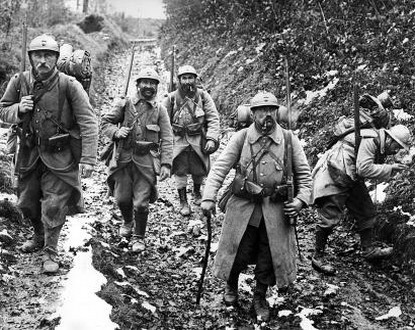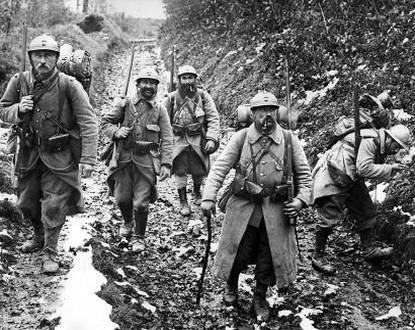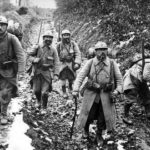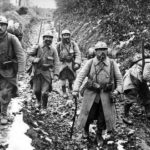The 20th century began with the first world conflict, the one that toppled four empires: Russia, Austria, Ottoman, and the German Reich.
 This war marked the end of an era, that of a carefree Europe energized by progress, which seemed limitless with the sciences, their promises, and industry.
This war marked the end of an era, that of a carefree Europe energized by progress, which seemed limitless with the sciences, their promises, and industry.
This progress would be limitless, but with a war that bloodied the continent to such an extent that some spoke of a suicide, and one can, in hindsight, give some credit to this thesis. The war that was expected to be quick and joyful became mired in fields once cultivated, turned into fields of honor, and the fighters buried in the mud fought for four long, too long years, in hostilities born from an assassination in a city in Serbia. Hatred, pride, and blindness did the rest with the widespread conflagration of old Europe.
A hundred years later, meaning a century, France and for what concerns us: Nice, will celebrate this event, a duty of remembrance towards those who fell for freedom and their country. The commemorations of this conflict will continue until 2020, to not miss any step of this war ended in 1918, but which was officially concluded in 1920 with the last peace treaties, including Trianon with Hungary and Sèvres with Turkey.
Nice had only been French for just over fifty years and definitively sealed its attachment, the Italians speak of reunion, with France by the sacrifice of its sons on the battlefields.
During the presentation of the events of this glorious centenary, Mr. Christian Estrosi, deputy mayor of Nice, evoked the 15th corps and the shameful accusations against it in 1914. He also spoke of the village of Flirey where a stele with the eagle of Nice testifies to fierce battles, Cimiez honors this battle with an avenue. Nice has a monument to the dead and the list of names of the children of the capital of the County who fell should suffice to answer the vile accusation against the 15th corps. The war and its bloody years will be evoked: 1915 with Italy entering the war alongside France and the allies, 1916 with Verdun whose name suffices to mark minds. 1917 with the entry of the United States into the conflict and the defection of Russia following its revolution where the imperial family was massacred, 1918 with the end of the echo of the cannons and the return of peace, a difficult peace since it took two years to conclude it, but a fragile peace with the second blaze twenty years later. From war to peace, this title doesn’t intend to evoke Tolstoy, but to underline a historical obviousness.
Since 1945, for almost 70 years, our old Europe has been at peace and after the fall of the Berlin Wall, it marches together, united and towards an even tighter union. The commemoration of this conflict, besides a duty of remembrance to those who fell and our ancestors now gone, must also encourage us to continue the work begun in the aftermath of the Second World War, a work of reconciliation and forgiveness between the nations of this Europe.
In this year 2014, we will also celebrate the landings of 1944 that liberated France and Provence from the Nazi yoke, and it should not be seen as a coincidence between these two events, but the confirmation of the will for peace in Europe, a Pax Romana rediscovered after 1500 years of wars, in a united and supportive Europe.
Thierry Jan




